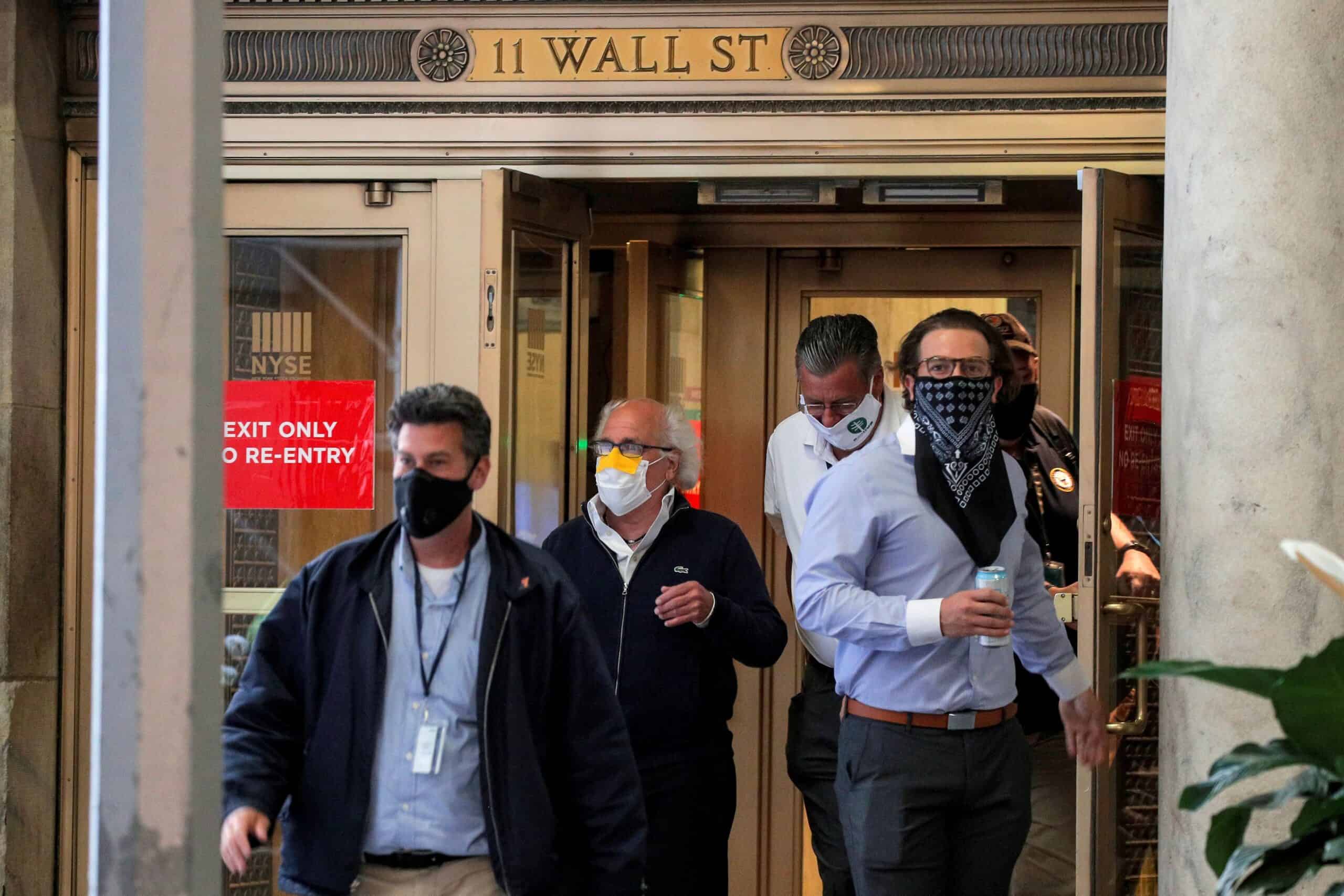It is impossible not to marvel at the apparently indestructible gap between the buoyant stock market and the less-than-buoyant real economy of workers, companies and jobs. One must say “apparently indestructible,” because maybe there is some simple and obvious explanation that eludes your correspondent. Otherwise, either the stock market is too high, or the economic outlook is too low. One or both must be wrong.
Just last week, the Organization for Economic Cooperation and Development (OECD) — a group of 36 countries — issued its forecast for the United States through 2021. It is unlikely to inspire much cheering. Acknowledging that much depends on the severity of the coronavirus, the OECD report constructs two scenarios: one that might be termed “pessimistic” and a second that is “more pessimistic.”
Under the “pessimistic” assumptions, the unemployment rate is projected at 11.3 percent at the end of 2020 and the economy (gross domestic product) falls 7.3 percent for the year. Both the unemployment rate and the GDP decline are larger than in any previous post-World War II recession. By way of comparison, the peak monthly jobless rate in the Great Recession of 2007-2009 was 10 percent.
The “more pessimistic” forecast assumes that there is a second wave of coronavirus cases. This delays the economy’s recovery and results in more deaths. In the “double-hit” scenario, the year-end unemployment rate is 12.9 percent, and the GDP drops by 8.5 percent. “The recession risks leaving behind a long-lasting negative economic impact,” the OECD warns. “Policies are needed . . . to help workers and businesses avoid scarring effects and fully recover from the crisis.”
Of course, the OECD could be too glum. A new report from the Congressional Budget Office foresees a slightly brighter future. It reckons the GDP decline for 2020 at 5.9 percent and year-end unemployment at 10.5 percent. Hardly a boom. The presidential campaign magnifies the uncertainty. President Trump or former vice president Joe Biden could easily say something that sharply moves the market.
Still, the stock market is clearly overpriced by standard measures. The workhorse of stock valuation is the price/earnings ratio, or PE. The stock’s price is a multiple of its earnings (profits). Suppose a stock sells for $10 a share with earnings of $1 a share. It has a PE of 10.
Historically, the PE for the entire U.S. stock market is about 15. But today’s market PE of roughly 23 is about 50 percent higher than the historic average. All sorts of theories have been advanced to explain these lofty prices. The most popular view involves the Federal Reserve’s policy of holding short-term interest rates near zero and flooding financial markets with money. The idea is that the low interest rates push investors into riskier financial assets, including stocks. Implied (but not yet said openly) is that the Fed might actually buy stocks to prevent a horrific crash.
William Silber, a retired financial historian at New York University, adds an interesting twist to this story. Investors and traders remember what happened in 2008 when Lehman Brothers went bankrupt. The Standard & Poor’s 500 stocks fell by 45 percent by mid-March 2009. “But by the end of 2009, the stock market had recovered almost all its losses,” says Silber. Many investors, he says, vowed not to miss that sort of profit-making opportunity again. When stocks tumble, these investors fortify their positions.
Writing for Project Syndicate, an opinion website, Nobel Prize-winning economist Robert Shiller of Yale University argues that crowd psychology has driven prices up. He divides the current market move into three separate periods: a 3 percent increase from Jan. 30 to Feb. 19; a 34 percent decline from there to March 23; and about a 40 percent rise from the end of March until now.
Once the Fed made clear its determination to foster recovery, “FOMO” — fear of missing out — took over, says Shiller. What happens now is anyone’s guess.
“The stock market and the economy have parted ways,” says Mark Zandi, chief economist for Moody’s Analytics. “I’m not sure what will trigger a sustained sell-off in stocks, but surging [virus] infections and another round of more business closures will be difficult for investors to ignore much longer.”
There are other theories of the market’s disconnect from the real economy. One is the rise of computer-driven trading. Another is the role played by younger traders. Having less market experience than their elders, they may be less risk-averse.
Who knows? The stakes are huge, politically and economically. If the market keeps or increases its value, it could bolster the recovery and Trump’s prospects. And, of course, if the market loses value, it will almost certainly hurt the recovery and help Biden. As always, the market is caught between fear and greed.

